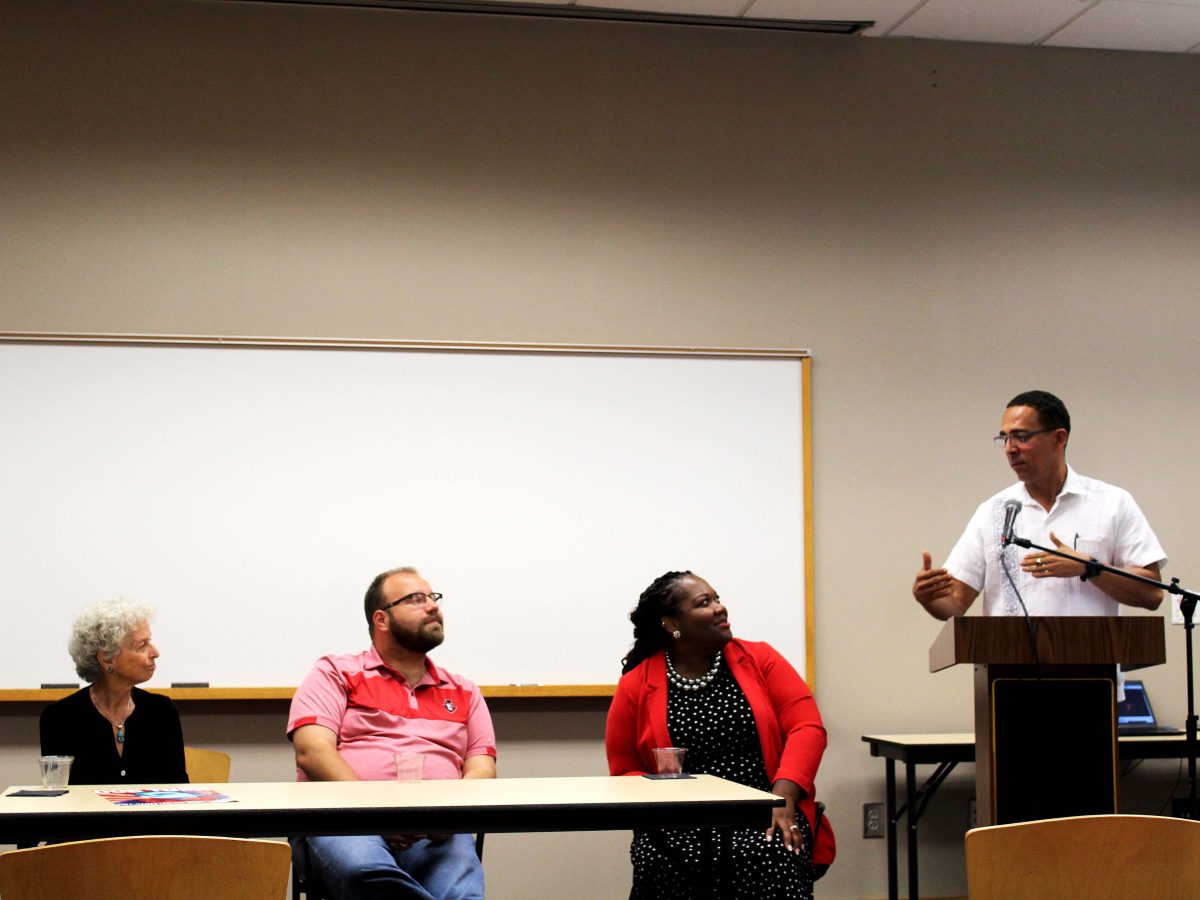It is widely known that many college students pay their tuition with help from the government through grants. Prisoners seeking higher education should be allowed the same opportunity.
Without grant money many students wouldn’t be able to attend college. President Obama now wants to extend this favor to inmates across the country to partake in college courses while incarcerated. However with more and more students enrolling in colleges every year, how thin will our grants be spread in order to compensate for those who are deemed less worthy?
Prior to the law that prohibited grants, inmates were given the same allowances as students who receive them. The government with no requirement of payback gives out grants, like the Pell Grant in particular, to students with low incomes who apply. Even if it makes more sense to support students who are law-abiding citizens, everybody deserves the opportunity of higher education.
For traditional full-time students cost of attendance at ASPU can get pretty expensive from year to year. Costs include; tuition and fees, books and supplies, room and board, personal expenses, transportation, and graduate student expenses. So, even with the Pell grant only a small dent is made. APSU is also a rapidly growing college, and hasn’t reached the level of attendance like some other colleges have. Why should we give inmates grant opportunities when we could raise the amount awarded through the Pell, to increase the number of debt free degrees?
Prisoners make up a large population of our state and their facilities are paid for with taxpayer dollars. According to drugsense.org “Since December 31, 1995, the U.S. prison population has grown an average of 43,266 inmates per year. About 25 percent are sentenced for drug law violations.” One of the biggest struggles with both taxpayer dollars and incarceration rates deal with drugs a little over 48% of people in prison are there for that specific reason. We pay billions of federal and state dollars yearly to fight the war on drugs, however this could be resolved if we taught prisoners other methods of making money, and helping those with drug addictions before its to late.
There are many ways to prevent incarceration rates before prisoners reach college level. According to all4ed.org “The nation could save as much as $18.5 billion in annual crime costs if the high school male graduation rate increased by only 5 percentage points.” Male incarceration rates severely out number female rates in the U.S. Attending to the needs of children prior to college could help lessen that rate. All4ed.org also says “The nation needs to focus dollars and efforts on reforming school climates to keep students engaged in ways that will lead them toward college and a career and away from crime and prison.” By engaging students earlier in life, the inspiration of college could come easier and the less taxpayers would have to spend money on.
Those who show interest in higher education should be allowed to apply and accept grants. According to politico.com “Prisoners who participate in correctional education programs are 43 percent less likely to return to prison and are also 13 percent more likely to have a job after finishing their sentence.”
Not only will higher education improve the quality of life for prisoners it will help put taxpayer dollars to better use.
According to Politico, “The Obama administration has increased total federal aid available to students by more than $50 billion and increased tax benefits and credits by an additional $12 billion, part of a total of about $150 billion a year in grants and loans for higher education. More than 2 million additional students now receive Pell grants, and the maximum Pell award has increased by more than $1,000.”
That is more than enough money to go around, both to college students and prisoners. “Education Secretary Arne Duncan and Attorney General Loretta Lynch announced the administration’s new Second Chance Pell Pilot program.” According to usnews.com, “The program will take place at Maryland Correctional Institution in Jessup, Maryland.”
This pilot program will be available to inmates as early as fall 2016. During the program extensive data will be taken to ensure the credibility of the program in the hopes to further it from state to state.
Though there are many who disagree with allowing inmates grants like Congressman Chris Collins of New York (R) and his worries for the experimental use of valuable taxpayer money by speaking against Arne Duncan and Loretta Lynch to usnews.com saying, “It will put the cost of a free college education for criminals on the backs of the taxpayers.” However, if our taxpayer dollars are going to be distributed to prisoners anyways why not allow for a positive reinforcement that could potentially lower the cost of upkeep for the rapidly growing incarceration rate, and hopefully scale down our fight with drugs.
The main reason people attend college is to better themselves, their careers and their futures; therefore it only makes sense to allow inmates the same opportunities. “When you go to prison you’re supposed to have a chance at rehabilitation to go back and live in society and lead a normal life,” says senior communication major Miranda Salters. “How can you do so if no one will treat you normally? The best rehabilitation is when you watch someone better themselves because of their past.”
This is exactly what Obama is working towards, a nation of people who want to better themselves who will better the world we live in.






